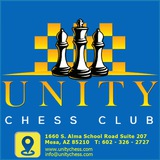How journalists used to work in those far-off analogue days. TASS correspondent Vasily Kanashenok (left) and Soviet master Vladimir Lepeshkin, at the FIDE Interzonal, Moscow, April 1982.
@UnityChess
@UnityChess
World Champion Anatoly Karpov (USSR), pictured in play v. Jonathan Speelman (England) in the 3rd round of the London (Phillips & Drew) tournament, 17th April 1982.
@UnityChess
@UnityChess
Viktor Arsentievich Goglidze (1905-1964), FIDE International Master (1950). A tournament was regularly held in his honour in Soviet Georgia.
@UnityChess
@UnityChess
who won this event and then went on to defeat Beliavsky, Korchnoi & Smyslov in the Candidates' matches to gain the right to challenge Karpov for the world title.
@UnityChess
@UnityChess
This media is not supported in your browser
VIEW IN TELEGRAM
Victor Korchnoi talks about his personal relationship with Anatoly Karpov before the start of the world title match in Baguio, July 1978.
@UnityChess
@UnityChess
#about_Horowitz
🔹 Israel Albert Horowitz
🔹 American chess master
♦️ Israel Albert Horowitz was a Jewish-American International Master of chess. He is most remembered today for the books he wrote about chess.
▪️ Full name: Israel Albert Horowitz
▪️ Country: United States
▪️ Born: November 15, 1907
Brooklyn, New York
▪️ Died: January 18, 1973 (aged 65)
▪️ Title: International Master; chess author, columnist, magazine owner
♦️ Horowitz was a leading player in the U.S. during the 1930s and 1940s. He was U.S. Open Champion in 1936, 1938, and 1943. In 1941, he lost a match (+0−3=13) with Samuel Reshevsky for the U.S. Chess Championship. He played on the U.S. Team in four Chess Olympiads, in 1931, 1935, 1937, and 1950; the first three of which were won by the U.S. In a famous USA vs. USSR radio chess match 1945, Horowitz scored one of the only two wins for the U.S. by defeating GM Salo Flohr. He split his "mini-match" of two games against Flohr, and in the 1946 edition of the same event, split his mini-match against Isaac Boleslavsky.
♦️ A memorable game by Horowitz👇🏼
🔸 Israel Albert Horowitz vs Salomon Flohr
🔸 USSR - USA Radio Match (1945), Moscow RUS and New York USA, rd 2, Sep-03
🔸 Caro-Kann Defense: Bronstein-Larsen Variation (B16)
♦️ Review and download PGN file👇🏼
@unitychess
🔹 Israel Albert Horowitz
🔹 American chess master
♦️ Israel Albert Horowitz was a Jewish-American International Master of chess. He is most remembered today for the books he wrote about chess.
▪️ Full name: Israel Albert Horowitz
▪️ Country: United States
▪️ Born: November 15, 1907
Brooklyn, New York
▪️ Died: January 18, 1973 (aged 65)
▪️ Title: International Master; chess author, columnist, magazine owner
♦️ Horowitz was a leading player in the U.S. during the 1930s and 1940s. He was U.S. Open Champion in 1936, 1938, and 1943. In 1941, he lost a match (+0−3=13) with Samuel Reshevsky for the U.S. Chess Championship. He played on the U.S. Team in four Chess Olympiads, in 1931, 1935, 1937, and 1950; the first three of which were won by the U.S. In a famous USA vs. USSR radio chess match 1945, Horowitz scored one of the only two wins for the U.S. by defeating GM Salo Flohr. He split his "mini-match" of two games against Flohr, and in the 1946 edition of the same event, split his mini-match against Isaac Boleslavsky.
♦️ A memorable game by Horowitz👇🏼
🔸 Israel Albert Horowitz vs Salomon Flohr
🔸 USSR - USA Radio Match (1945), Moscow RUS and New York USA, rd 2, Sep-03
🔸 Caro-Kann Defense: Bronstein-Larsen Variation (B16)
♦️ Review and download PGN file👇🏼
@unitychess
📘 5.Qd2!?
A sideline compared to the standard 5.Bb5.
Carlsen intends to place his dark-bishop on the long diagonal and go to the queenside castle.
5...Nf6 6.b3 e6 7.Bb2 a6 8.0-0-0 b5 9.f3
A sideline compared to the standard 5.Bb5.
Carlsen intends to place his dark-bishop on the long diagonal and go to the queenside castle.
5...Nf6 6.b3 e6 7.Bb2 a6 8.0-0-0 b5 9.f3
📘 9...h5 10.Nh3!
Carlsen immediately exploits the black's last move that creates a weak square on g5.
19...Be7 11.Ng5 h4 12.f4
Carlsen immediately exploits the black's last move that creates a weak square on g5.
19...Be7 11.Ng5 h4 12.f4
📘 25...Rc5?
Wojtaszek should have played 25...e5 to prevent White's next move.
26.e5! d×e5 27.f×e5 Rh1?? 28.R×h1 B×h1 29.Rh2 R×e5 30.Rh8+ Ke7 31.Qa7+ 1-0
Wojtaszek should have played 25...e5 to prevent White's next move.
26.e5! d×e5 27.f×e5 Rh1?? 28.R×h1 B×h1 29.Rh2 R×e5 30.Rh8+ Ke7 31.Qa7+ 1-0
